
Fire Extinguishers: What Homeowners Need to Know
Household fires can spark out of nowhere while cooking, doing laundry, smoking indoors, or even from an electrical malfunction. The National Fire Protection Association (NFPA) recorded 357,000 household fires in the United States in 2017 alone.
The best defense any homeowner can have against these unexpected accidents is to be prepared with a working fire extinguisher and know how to use it.
What Are The Different Fire Extinguisher Classes?
Not all fire extinguishers are designed for the same type of fire. So, it’s crucial to know what kind of fire extinguisher you have before the need arises. For example, a Class A fire extinguisher is excellent for most household fires, but it could do more harm than good if grease or oil is present.
What Is a Class A Fire Extinguisher?
A class A fire extinguisher are suitable for putting out fires involving wood, paper, cloth, and plastic.
What Is a Class B Fire Extinguisher?
A class B fire extinguisher will safely put out small fires fueled by grease, gasoline, propane, oil, and oil-based paint.
Related Products
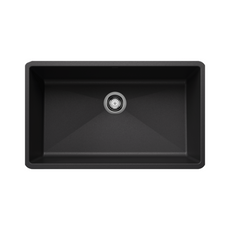
Blanco PRECIS Super Single Undermount SILGRANIT Kitchen Sink
Blanco
In Stock
9 Colors
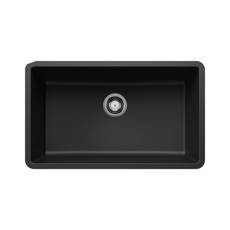
Blanco PRECIS 30 Undermount Single Bowl SILGRANIT Kitchen Sink
Blanco
In Stock
9 Colors
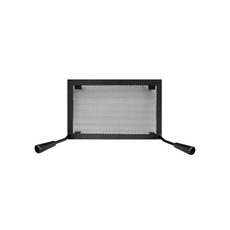
SBI Rigid Firescreen - AC01299
SBI
In Stock
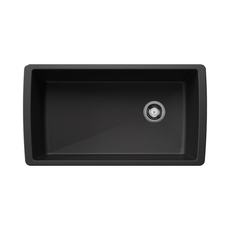
Blanco Diamond Super Single Bowl SILGRANIT Kitchen Sink
Blanco
In Stock
9 Colors
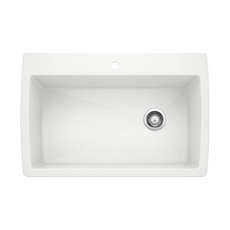
Blanco Diamond Super Single Dual Mount SILGRANIT Kitchen Sink
Blanco
In Stock
9 Colors

SBI Rigid Firescreen - AC01281
SBI
In Stock
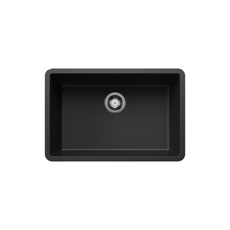
Blanco PRECIS 27 Undermount Single Bowl SILGRANIT Kitchen Sink
Blanco
In Stock
8 Colors
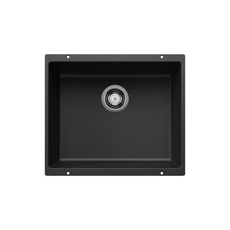
Blanco PRECIS 21 Undermount Single Bowl SILGRANIT Kitchen Sink
Blanco
In Stock
8 Colors
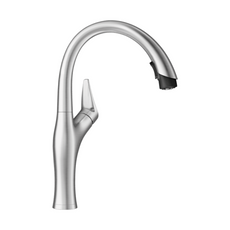
Blanco Artona Pull-Down 1.5 GPM Kitchen Faucet
Blanco
In Stock
7 Colors

Stylish S-642W 42 inch Stainless Steel Workstation 70/30 Double Bowl Undermount Kitchen Sink with Accessories
Stylish
In Stock
What Is a Class C Fire Extinguisher?
A class C fire extinguisher should only be used on electrical fires like those caused by an oven, clothes dryer, or power tools.
What Is a Class D Fire Extinguisher?
A class D fire extinguisher is for use on fires ignited by flammable metals. Class D fire extinguishers are usually not necessary in homes but are very common in factories.
What Is a Class K Fire Extinguisher?
A class K fire extinguisher is used to put out fires containing vegetable and animal oils and fats. A Class B fire extinguisher is sufficient for most household kitchen fires, but Class Ks are ideal for commercial kitchens.

While you can purchase single-class fire extinguishers, most household fire extinguishers are designed to be multi-purpose. Therefore, these will show multiple classes listed on the label. For example, an A-B fire extinguisher can put out common kitchen fires caused by a stray dishtowel used to clean up frying oil splatter.
You’ll notice there is also a number listed before the letter classification on your fire extinguisher. That number tells you just how much extinguishing agent the fire extinguisher holds. In Class A extinguishers, the number represents the number of gallons of water used times 1.25. By this simple calculation, a fire extinguisher labeled 3-A contains 3.75 gallons of fire squelching water. In a Class B fire extinguisher, the number represents the square footage that the extinguisher can cover. That means an extinguisher labeled 40-B is capable of putting out a 40 square foot fire.
What Are The Different Types of Fire Extinguishers ?
Fire extinguishers can be purchased based on the type of extinguishing agent they contain. Available in one or multiple classes, the 4 types of fire extinguishers are pressurized water (APW), foam, carbon dioxide (CO2), and dry chemical (DC).
What Are Pressurized Water (APW) Fire Extinguishers?
Pressurized water (APW) extinguishers only use water to put out a fire, similar to the hose a fire engine carries. These fire extinguishers are only available in Class A. These types are the least toxic from a health and mess standpoint, but not all fires can be contained with just water.
What Are Foam Fire Extinguishers?
Foam extinguishers use a foam solution to squelch flames. These extinguishers are much safer than APW extinguishers, where an electrical device may still be on, as in kitchen fires. Foam extinguishers are available in Class A and Class B and are usually marked with a visible blue band.
What Are Carbon Dioxide (CO2) Fire Extinguishers?
Carbon dioxide (CO2) extinguishers contain carbon dioxide to suffocate a Class B or Class C fire. They are not very effective against Class A fires.
What Are Dry Chemical (DC) Fire Extinguishers?
Dry chemical (DC) extinguishers are the most common multi-purpose extinguisher available for household use. These fire extinguishers contain mono-ammonium phosphate pressurized by nitrogen. The chemical output isn’t ideal for a sustainably-minded homeowner, as the Safety Data Sheet recommends eye, face, and skin protection for safe handling. However, many DC extinguishers are refillable, making them more sustainable than buying a new fire extinguisher after every minor household fire.

Why Is It Important to Properly Maintain a Fire Extinguisher?
A fire extinguisher does no good if it’s not working, and you certainly don’t want to wait until an emergency to discover such disheartening news.
If it’s been a while since you last looked at your fire extinguisher, look at it as soon as you are finished reading. The instruction affixed to the extinguisher's side should tell you everything you need to know about the type and class of extinguisher you have and how to maintain it properly. For example, some fire extinguishers need to be shaken monthly, and some need to undergo a pressure test every few years.
Your fire extinguisher should also be cleaned every few months to remove dust, oil, and grease. If the handle is rusted, you should probably consider getting a new extinguisher to ensure it works if/when it’s needed.
If you have an older fire extinguisher that contains halons or CFCs, you should replace it. The use of these extinguishers severely damages the ozone layer and is forbidden by the LEED rating system. You can properly dispose of these outdated fire extinguishers at your local household hazardous materials disposal center.
It’s also important you watch for fire extinguisher recalls.

What Is The Best Fire Extinguisher For Home?
Most households will benefit from a multi-purpose fire extinguisher labeled A-B or A-B-C to combat the different types of fires common at home.
As you narrow in on the fire extinguisher for you, be sure you choose one that all adult members of your household can easily lift and use. You can find fire extinguishers at most hardware stores, big box stores, and even online. Make sure an independent testing laboratory has reviewed the extinguishers you choose, as shown on the label.
How Many Fire Extinguishers Do You Need and Where Do You Store Them?
Homes should have one fire extinguisher on each level of your home. Keep them near the exits to your home and in places where fires are more likely to occur, like your kitchen, garage, workshop, and near fireplaces and BBQs. Fire extinguishers should be stored under 120 degrees Fahrenheit, so be sure to keep them at a safe distance from ovens, fireplaces, and grills.
Choose easy-to-access locations in an emergency, like in a cabinet or mounted to the wall. Wall-mounted extinguishers should be installed four to five feet high, out of reach of pets and children. Extinguishers stored in cabinets should be kept in the front and at a level easy to reach by all adults who live in your home. Be sure you include the locations of fire extinguishers in your family’s emergency plan.
How Do You Use a Fire Extinguisher?
A fire extinguisher will only work if you know how to use it correctly. Unfortunately, during an active fire is not the time to learn.
It’s essential all adult members of your household read the instructions affixed to the side of your fire extinguisher(s) and feel comfortable using it in an emergency. In addition, the NFPA recommends not training children to use household fire extinguishers, as their primary goal during a fire should be to get out of the house and to your designated safe location.
Most fire extinguishers use the PASS technique for putting out a fire:
P: Pull the pin
A: Aim at the base of the fire
S: Squeeze the handle
S: Sweep slowly from side to side
Most fire departments offer hands-on fire extinguisher training for even better emergency preparedness that anyone can attend for free. Contact your local fire department to ask about upcoming training sessions.
Fire Extinguishers Save Lives
Rise writes about sustainable and even resilient homes. But accidents and disasters happen. So every house should have a working fire extinguisher, and adult inhabitants should know how to use it.
Proper fire extinguisher maintenance and emergency preparedness will ensure you and your loved ones are ready to put out any small household fire at a moment’s notice.
Disclaimer: This article does not constitute a product endorsement however Rise does reserve the right to recommend relevant products based on the articles content to provide a more comprehensive experience for the reader.Last Modified: 2022-01-19T03:53:39+0000Article by:
Laura Bourland
Laura grew up in the California suburbs, far removed from environmentalism, but nature always has a way. She uprooted her life in 2015, moving to the countryside of Washington to live a more sustainable and simple life on 12 acres. She and her fiancee are learning on the job as they attempt everything from gardening and natural pest control to eco-friendly building and home improvement.